While all the ancient civilizations come with their own unique legends and myths, Greek mythology has always managed to arouse a special interest. And honestly, how could it not? Greek mythology is made up of a set of different traditional stories that include different deities and creatures, heroes and villains. The stories and legends are engaging, healthy and absolute. However, these legends and myths have been circulating for ages now, and as a result they are compared to mythological stories from other cultures.
The Indus Valley Civilization flourished in the South Asian region around 3300 BCE This was the birthplace of Hinduism and that is where today's India lies. Despite the geographical difference, both ancient Greek civilization and the Indus Valley civilization were two of the oldest and richest civilizations of all time. However, that is not all they have in common.
Over the years, there have been some strange similarities in both the mythological stories, in Indian mythology and Greek mythology. From deities to mythological creatures, to legends and myths, there are some unmistakable similarities that can not be denied. These cases raise so many questions about why they are so similar even after belonging to two completely different cultures. Unfortunately, only speculation and theories answer this question, and no solid answer.
Greek deities and their Indian counterparts

Both Indian mythology and Greek mythology follow a polytheistic approach. This is why both cultures have more gods and goddesses. There are gods for everything, from love to wealth and happiness, from power to wisdom.
Zeus and Indra

In Greek mythology, Zeus is the king of the gods. He is the god of thunder and lightning and is considered to be one of the most powerful warriors of all time.
According to Indian mythology, Indra is the king of his pantheon. He is the god of rain and thunder and is considered to be one of the best warriors of all time.
Both of these gods have a thunder like a weapon. Both are portrayed as morally gray, polygamous women adorers. Both are also self-centered and jealous by nature. The resemblance is simply eerie.
Hades and Yama

According to Greek mythology, Hades is the lord of the underworld. He is portrayed as cold and strict.
In Indian mythology, Yama is the god of death. He is portrayed as the face of Dharma and the bearer of truth.
Both Hades and Yama are responsible for souls in the afterlife. Both are the leaders of their versions of life after death and hand out punishments for past transgressions.
Hermes and Narada

In Greek mythology, Hermes is the messenger of the gods, who has winged shoes. Using these shoes, Hermes acts as a courier carrying news to and from the gods.
According to Indian mythology, Narada is the messenger of the gods who teleports freely anywhere. He is said to gather all information and give it to the gods.
In legends, both are portrayed as wise and cunning, and both are known for tricks and deceived people. Both are also one of the only individuals who can travel freely through the divine as well as the mortal realm.
Eros and Kamadev
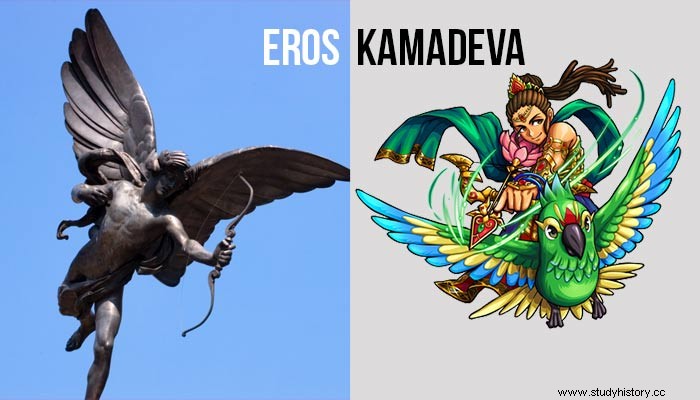
Eros is the Olympic god of love and the son of Aphrodite, the goddess of beauty and love.
Kamadev is the Indian deity of lust and love, and is considered to be the son of Lord Vishnu and the goddess Lakshmi.
Both Eros and Kamadev are portrayed as the god of love and are considered to have a bow and arrow, which they use to make people fall in love.
Persephone and Sita

Persephone in Greek mythology and Sita in Indian mythology, were both abducted against their wishes. Persephone was abducted by Hades, while Sita was abducted by Ravana.
Achilles and Karna
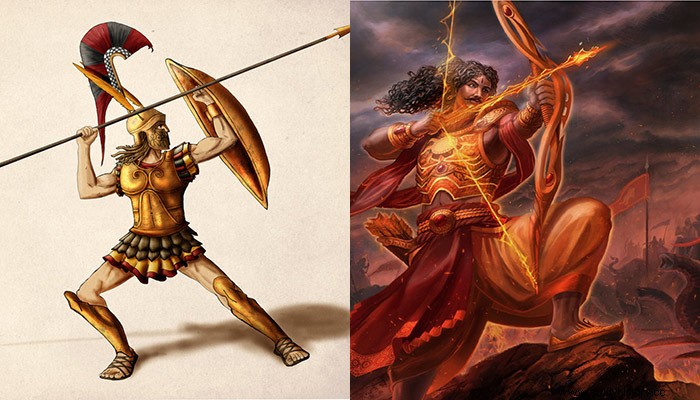
Achilles and Karna were both demigods and incredibly skilled warriors.
In Indian mythology, Karna wore impenetrable armor, which helped him achieve his invincibility.
According to Greek mythology, Achilles was dipped in the Styx River as an infant, by his mother. As a result, most of his body became invincible where the water touched, except for his heels, due to his mother's grip on them.
Karna's armor has largely been compared to that of Achilles' Styx-coated body.
Hephaestus and Vishwakarma

Vishwakarma is a fairly modern Hindu god, who is said to have made the weapon for Indra. In the same way, Zeus' weapon was made by Hephaestus. Both are considered to be the gods of construction and architecture.
Athena and Kali

According to legends, both Athena and Kali were born from the foreheads of the other gods.
Athena is the goddess of wisdom, courage, civilization, law and justice, strategic warfare, strength, craftsmanship and skill. She is said to have jumped out of Zeus' forehead after he experienced a huge headache.
The goddess Kali is said to have been born from the forehead of the goddess Durga. It is said that when the goddess Durga responds with such anger, her face darkens and the goddess Kali appears outside her forehead.
Myths and legends that seem all too familiar
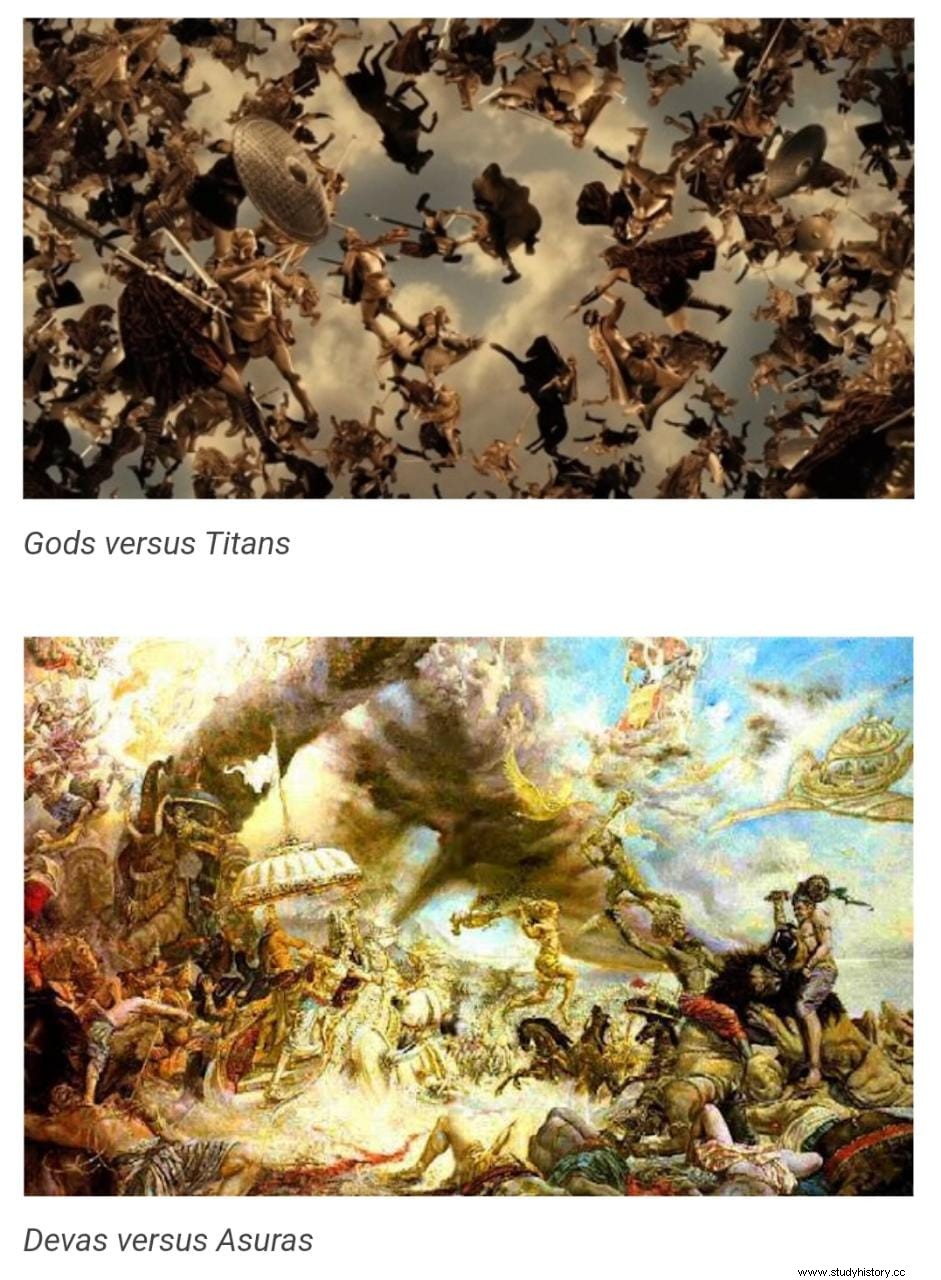
Greek mythology and Indian mythology are both incredibly rich in myths and legends. There are many stories, with different characters. What can not be ignored, however, are the striking similarities between the characters and the situations, and the cases that are told in the stories.
The Holy Trinity

Both Greek mythology and Indian mythology have a kind of sacred trinity that rules the cosmos.
In Greek mythology, it is Zeus, the ruler of heaven; Hades, the ruler of the underworld; and Poseidon, ruler of the sea.
Similarly, in Indian mythology it is Brahma, the Creator; Vishnu, the protector, and Shiva, the destroyer.
The Seven Sisters and Saptarishis
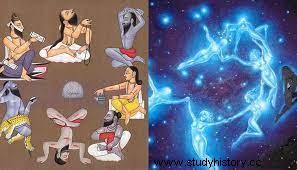
In Greek mythology, there is a mention of the seven sisters, also known as the Pleiades. They are said to be a cluster of stars.
Similarly, in Indian mythology, the concept is Sapthrishis, which are seven bright stars that can control even the sun.
Children of God and man

In Greek mythology, the term demigods is popular. According to legends, they are said to be the offspring of a god or goddess and a mortal being. In the myths, they are worshiped as heroes. Perseus, Achilles and Hercules are some of the most famous demigods of all time.
It is a similar concept present in Indian mythology. In the legendary Mahabharata epic it is said that the Pandavas are the father of gods, but born of mortal mothers. According to legend, Yudhishthira was the son of Yama, Bhima was the son of Vayu, and Arjuna was the son of Indra. Kunti was the mother of all three. Nakula and Sahadeva were twins, born of the divine Ashvini twins and born of Madri.
Fateful Prophecies

In mythology, prophecy is a fairly common case. However, some prophecies lead to great mythological events.
Such a prophecy is mentioned in Greek mythology. It is said that it was a prophecy that one of Cronus' children would be the end of his reign. As a result of the prophecy, Cronus began killing all his children by swallowing them as soon as they were born. However, his wife Rhea managed to save Zeus and sent him to grow up in exile. Later, after growing up, Zeus returned and overthrew his father and freed his siblings.
In Indian mythology, similar cases occur between Lord Krishna and Kansa. According to legend, it was a prophecy that Kansa would be dethroned and killed by the eighth child of Sister Devaki. As a result of the prophecy, Kansa kept her sister and her husband Vasudeva imprisoned and killed each of their children as soon as they were born. However, Devaki and Vasudeva managed to save Krishna, and later returned and killed Kansa.
Absence that caused a chain of events

There are many similarities and contrasts between the Greek epic Iliad and the Indian epic Ramayana . However, perhaps the most noticeable similarities are the premises of the war and its tragic end.
Iliad describes the course of the Trojan War and its end. A similar thing is seen in Ramayana , which explains the events of the war between Lord Rama and the demon king Ravana.
Both stories have a woman as the cause of the brutal war. The only contrast here is that in the Iliad Helen fell in love with Paris and ran away, while in Ramayana Sita was abducted by Ravana.
After the war, both epics end in a tragic tone, since the victors were not happy despite winning. I Iliad , the epic ends with the city of Troy being completely destroyed along with the love between Helen and Paris. I Ramayana , Sita was sent into exile and asked to go on fire to prove her purity. The epic ends with her being devoured by the earth itself.
The tragic end of the almighty hero
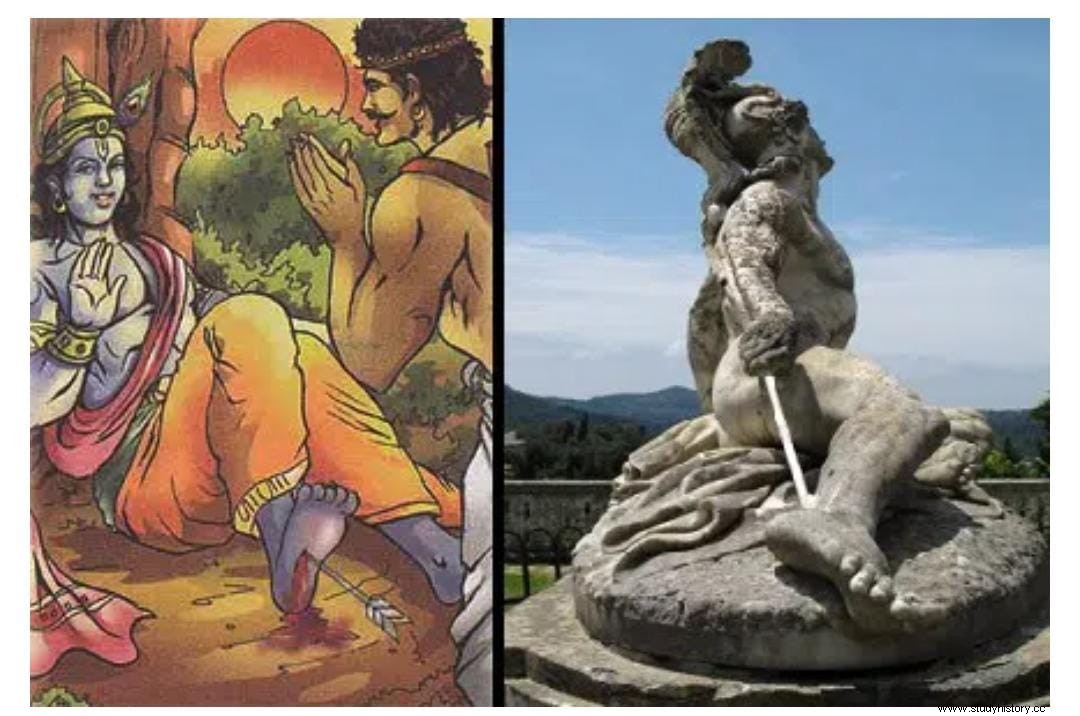
In Greek mythology, Achilles was without a doubt one of the most skilled warriors and a respected man of all time. He was said to be invincible, since he had impenetrable armor and was incredibly skilled in all kinds of warfare. However, he had only one vulnerable body part, his heels, which were used against him. Achilles was killed by an arrow sticking through his heel.
A similar case appears in Indian mythology with Lord Krishna. He was the reincarnation of Lord Vishnu and was practically a god in the mortal kingdom with supernatural powers. However, he was also killed by an arrow sticking through his heel.
Strangely similar places

Both in Greek mythology and in Indian mythology, several places are mentioned that seem vague, but strangely similar. These places are generally mentioned in legends and myths and are very specific.
Vaitarani and Styx - a river that separates two worlds

Both in Greek mythology and in Indian mythology, special rivers are mentioned that separate the mortal world from the spirit world. In Greek mythology the river is called Styx and in Indian mythology it is called Vaitarani. In both cultures, the Milky Way is seen as the river.
Mount Kailash and Mount Olympus - The Residence of Gods
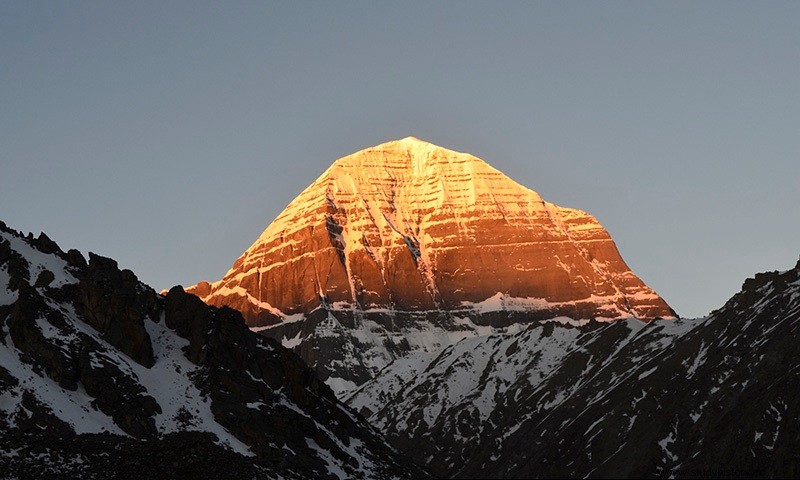
Mount Kailash and Mount Olympus are both true mountains with deep religious significance in Indian and Greek mythology, respectively. Mount Kailash is the home of Lord Shiva and the goddess Parvati. Mount Olympus, on the other hand, is home to the Twelve Olympic Gods
Atlantis and Dwarka - The Lost Cities

In Greek mythology, Atlantis is a legendary island. According to legends, after a failed attempt to invade Athens, Atlantis sank in the ocean. In Hindu mythology, Dwarka, a city built by Vishwakarma on the orders of Lord Krishna, suffered a similar fate with immersion in the sea after a war among the Yadavas, the descendants of Lord Krishna.
Mythological creatures that look suspiciously similar

There are countless mythological creatures in both mythologies. Some of them are good, but some are downright evil. Most of the Greek mythological creatures are huge and unique. However, there are some creatures that are quite similar to Indian mythological creatures.
Cerberus and Sharvara
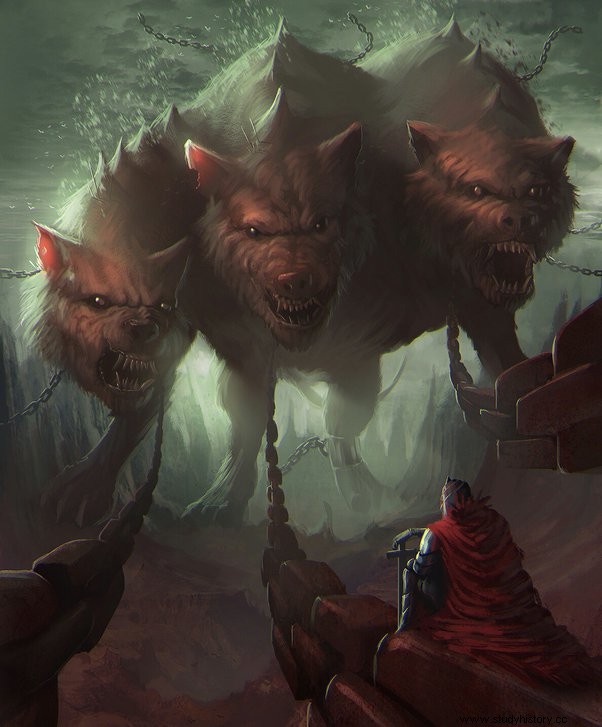
In Greek mythology, the gates of hell are said to have been guarded by the hell dog from Hades. It's called Cerberus.
In the same way, Sharvara was Yama's dog, guarding the gates of the underworld.
Icarus &Daedalus and Jatayu &Sampati

In Greek mythology, Daedalus was a skilled craftsman and was held captive in a tower with his son, Icarus. To escape, Daedalus created wings for himself and his son using feathers and wax. During their flight to freedom, Daedalus warned his son not to get too close to the sun for fear that the wax in his wings would melt. But Icarus soared high above the sky and went so close to the sun that his wings melted and he died.
This story is somewhat parallel to the story of Jatayu and Sampati in Indian mythology. Unlike Greek history, the story of Jatayu and Sampati is one of fraternal devotion. According to legend, Jatayu, blinded by his pride of power, reached so close to the sun that his wings were about to be destroyed. However, he was rescued by his brother Sampati, who decided to spread his own wings to shield his brother. In the process, Sampati lost its own wings and spent the rest of its life without them.
Minotaur and Mahishasura
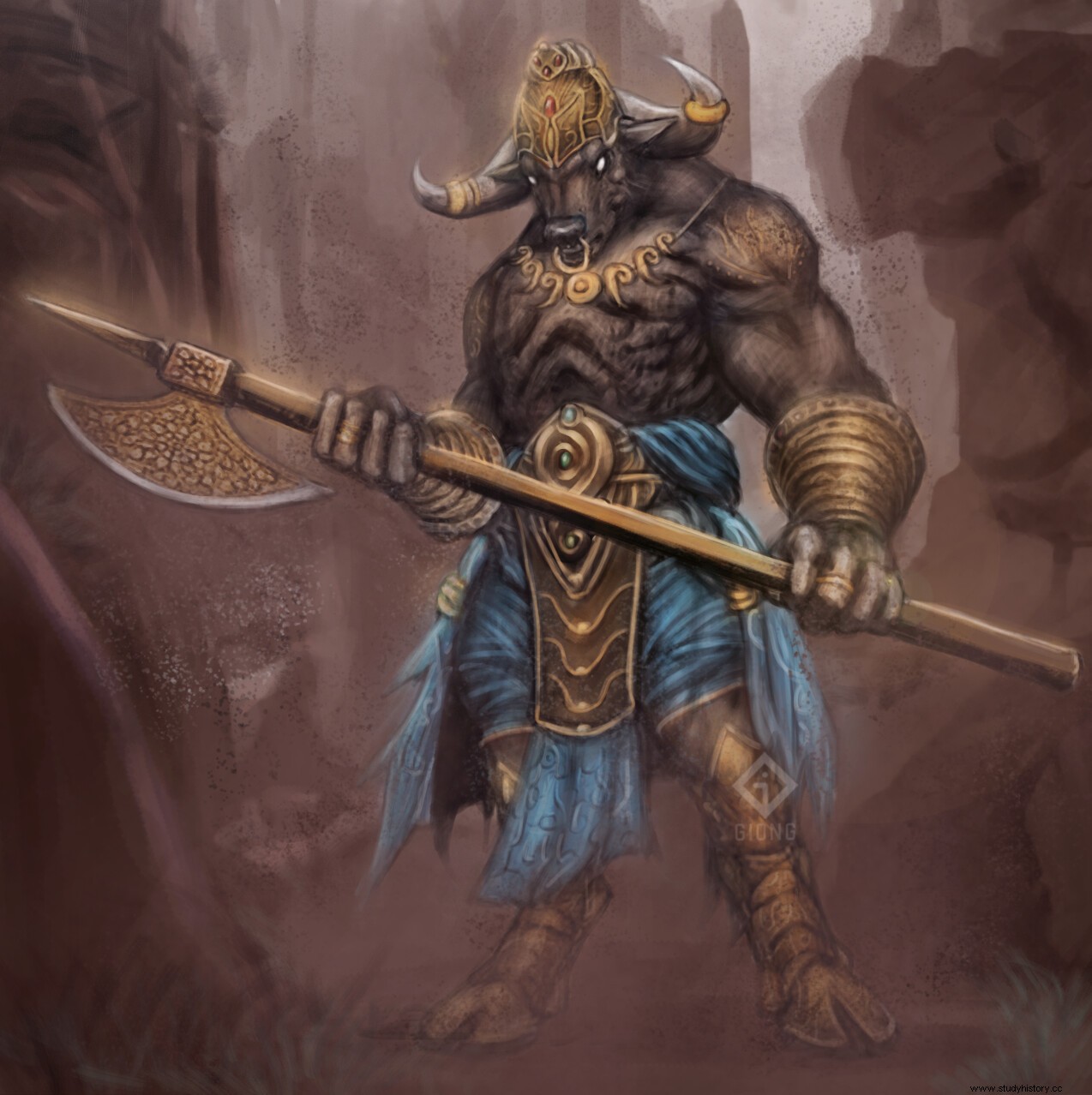
In Greek mythology, the Minotaur was a monster with the body of a man and the head and tail of an ox. It was said to be the offspring of the Cretan queen Pasiphae and a majestic ox. The Minotaur used to live in a maze, and received annual offers from young people and virgins to eat. He was eventually killed by the Athenian hero Thesus.
A similar creature is found in Indian mythology called Mahishasura. According to legends, Mahishasura was a buffalo demon who pursued his evil ways by changing form into a buffalo. He was eventually killed by the goddess Durga.
Nymphs and Apsaras

Nymphs in Greek mythology were described as being inferior to female deities. They were considered to be symbols of beauty and femininity, established by the number of gods and men who fall in love with them by sight or have a love affair with them. They were not immortal, but were extremely long-lived.
Apsaras in Indian mythology were described as celestial singers and dancers who used to inhabit the heavens of the god Indra. It is said that the Apsaras used to give sensual pleasure to both gods and humans.
But why are they so similar?

There are many hypotheses as to why there are so many similarities between Greek and Indian mythologies. The most assumed, however, is the belief that it is because both cultures have a common origin. According to this hypothesis, both Greek and Indian culture emerged from a prehistoric religion, which is the proto-Indo-European religion. It is believed that these people migrated in all different directions, which resulted in the formation of the proto-ethnic groups of many of today's ethnicities. These groups can be divided into ethnic groups, such as Iranian, Germanic, Indo-Aryan, Greek and several others. As they continued to migrate and mingle with other groups, they also continued to spread their languages and culture, taking them everywhere. When the Indo-Aryans finally arrived on the Indian subcontinent, mingling with the already existing people of the region, it resulted in the birth of modern Indians. In the process, their religion was also merged with the indigenous folk religions of the day, which evolved into Hinduism as it is known today.
The same thing happened with Greek culture, where a group of people migrated to modern-day Greece. They were also mixed with the native hunter-gatherers of the day. As a result, they formed the modern people of Greece, creating the pantheon of Greece.
Similarities between Greek and Indian mythology
9 strange similarities between Greek and Indian mythology
8 Incredible Similarities Between Hindu and Greek Mythology
